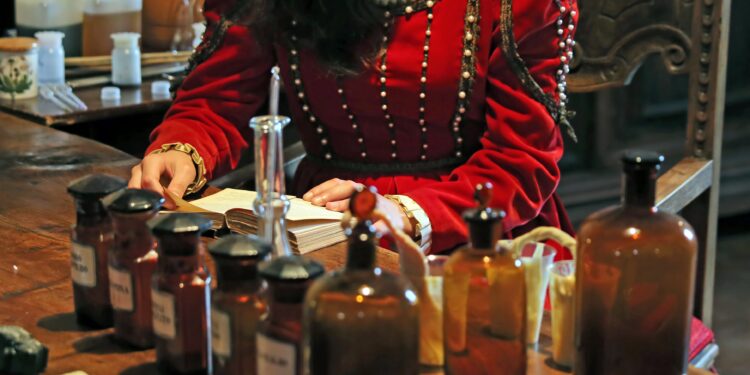Natural remedies from the middle ages, is effective against bacterial infections Naturopathy naturopathy specialist portal
How effective medicine from the middle ages is nowadays?
A from natural ingredients formulated remedies from the middle ages could help to combat the worldwide increase in antibiotic resistance. The medium seems to be particularly for the treatment of biofilm-associated infections suitable.

In a study at the School of Life Sciences, the University of Warwick, it was found that an old remedy from the middle ages seems to be effective in biofilm-associated infections. The results were published in the English scientific journal “Scientific Reports”.
How to secure bacteria for their Survival?
Bacteria survive in two different ways, either as individual planktonic cells or as a multi-cellular Biofilm. Such a Biofilm helps protect the bacteria against antibiotics, making them more difficult to treat. A Biofilm can be very difficult to treat, occurs for example in diabetic foot ulcers.
The researchers tried to find a natural remedy to close the gap in treatment with antibiotics. They found that medieval methods of microbial natural anti agents could help you out of everyday ingredients to solve the Problem.
What was the 1,000-year-old remedy?
Building on previous research at the University of Nottingham are working on the use of medieval remedies for the treatment of MRSA, the researchers reconstructed the ends of the University of Warwick, a 1,000 year-old medieval remedy, which is onion, garlic, wine, and bile salts. The mixture showed a promising antibacterial activity. The Team noted, however, that the mixture also causes little damage to human cells.
What could be the remedy effective?
The agent is against a number of gram-negative and gram-positive Wundpathogenen in planktonic culture to be effective and could be used against pathogens that occur as biofilms, such as, for example, Acinetobacter baumanii, Stenotrophomonas maltophilia, Staphylococcus aureus, Staphylococcus epidermidis, and Streptococcus pyogenes. All of these bacteria are found in biofilms, which occur in diabetic foot ulcers and can be resistant to treatment with antibiotics. Not rarely an Amputation is in the case of such ulcers is necessary to prevent the bacteria from spreading in the blood and is a fatal Bacteremia cause.
Anti-microbial activity is not based on a single ingredient
The use of garlic, which contains Allicin, might explain the activity against planktonic cultures. Garlic alone, however, results in no activity against biofilms, and therefore, the antibiotic activity of the remedy can not be attributed to a single ingredient, but it requires the combination of all ingredients, in order to achieve full activity, report the researchers.
Remedy has potential for effective anti-bacterial treatment
It showed that the medium can kill the ancient remedies of onion, garlic, wine, and bile is a range of problematic bacteria, which grow in both planktonic as well as biofilm approach. Since the mixture has neither the human cells in the laboratory experimental animals (mice) a large damage, it could be developed from the medium may be a safe and effective anti-bacterial treatment, says the research group.
Should only be single Compounds researched?
A large proportion of the nowadays used antibiotics derived from natural Compounds. The results of the current research underscore the need for not only individual Compounds but also mixtures of natural products for the treatment of Biofilm-to explore infections.
Ingredients by realistic models check
The identification of new antibiotics from natural products could be improved by the investigation of different combinations of content instead of individual plants or Compounds, explain the researchers. The current study shows how important it is to use in the search for new antibiotics realistic models. Although a single component is sufficient to plank Toni to kill cal cultures, continue to fail at more realistic infection models, in which the full is successful, the research group. (as)
